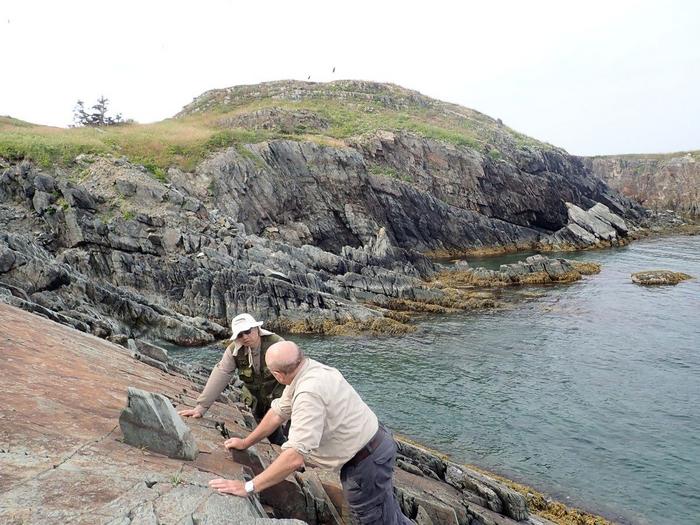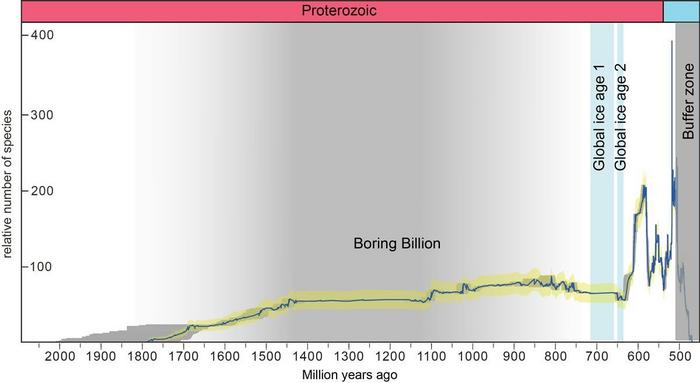The Proterozoic Eon, spanning from 2,500 million to 539 million years ago, marked a transformative chapter in Earth’s history. Often overshadowed by the more data-rich Phanerozoic Eon, this period was characterized by critical evolutionary, environmental, and tectonic changes. However, the fossil record of Proterozoic life has been challenging to interpret due to its sparse and inconsistent nature.
A groundbreaking study, published in the journal, Science, by Virginia Tech geobiologist Shuhai Xiao and his team has changed that narrative.
Through high-resolution analysis and a global compilation of fossil data, this research illuminates the diversity and evolutionary dynamics of eukaryotic life during the Proterozoic. These findings offer fresh insights into the coevolution of life and Earth’s systems and could reshape our understanding of early biodiversity.
Eukaryotes, organisms with nuclei in their cells, are the ancestors of modern multicellular life. They emerged no later than 1.8 billion years ago and slowly diversified over the ensuing “boring billion” years—a stretch from 1,450 to 720 million years ago marked by low species turnover rates.

Unlike later eras, Proterozoic life was smaller, softer, and less likely to fossilize. Organisms such as ancient marine eukaryotes were often akin to squishy sea sponges, leaving minimal traces in the rock record.
Despite these challenges, Xiao’s team utilized advanced graphic correlation tools to enhance the temporal resolution of Proterozoic fossil data, creating the most comprehensive analysis of this period to date.
“Species turnover during the ‘boring billion’ was remarkably low,” Xiao explained. “Eukaryotic species evolved at a slower pace and tended to persist longer compared to later periods. This stability suggests unique ecological or environmental conditions that limited rapid evolutionary change.”
The “boring billion” gave way to dramatic upheavals during the Cryogenian period, when Earth experienced two severe glaciations known as Snowball Earth events. These ice ages, occurring between 720 and 635 million years ago, encased the planet in ice and drastically altered global ecosystems. When the ice receded, it triggered an explosion of evolutionary activity. Species diversification accelerated, and turnover rates soared.
Related Stories
“The ice ages were a major factor that reset the evolutionary path in terms of diversity and dynamics,” Xiao stated. “We see rapid turnover of eukaryotic species immediately after glaciation. That’s a major finding.” The data suggest that post-glaciation environments fostered conditions favorable for innovation and competition.
Possible contributors include increased atmospheric oxygen levels and ecological pressures that encouraged evolutionary adaptations. This period set the stage for the rise of complex multicellular organisms, eventually leading to animals, plants, and fungi.
While the study provides a clearer picture of Proterozoic life, it also raises compelling questions. Why was evolution so slow during the “boring billion”? What drove the rapid diversification after Snowball Earth? Were environmental factors, such as climate and oxygenation, solely responsible, or did evolutionary pressures play a role? The answers may lie in the interplay between Earth’s geosphere and biosphere.
For example, rising oxygen levels could have spurred metabolic innovations, while glaciation-induced disruptions might have created ecological niches for new species. Alternatively, competition among organisms could have sparked an evolutionary arms race, driving faster adaptation.

“This quantified pattern of diversity and dynamics provides a framework for future studies,” Xiao said. “Scientists can use this data to explore how life on Earth coevolved with its environment over billions of years.”
This research enriches our understanding of life’s early history and offers a new lens to view Earth’s evolutionary tapestry. By extending the “chart of life” back nearly two billion years, it underscores the resilience and adaptability of early life in the face of profound environmental challenges.
The implications extend beyond the scientific community. These insights help us appreciate the delicate balance of biodiversity and environmental change—a dynamic that continues to shape life on Earth today. As Xiao’s analysis demonstrates, even the most ancient and enigmatic periods of Earth’s history can reveal critical lessons about our planet’s past, present, and future.
Note: Materials provided above by The Brighter Side of News. Content may be edited for style and length.
Like these kind of feel good stories? Get The Brighter Side of News’ newsletter.
The post Historic study extends chart of life by nearly 1.5 billion years appeared first on The Brighter Side of News.